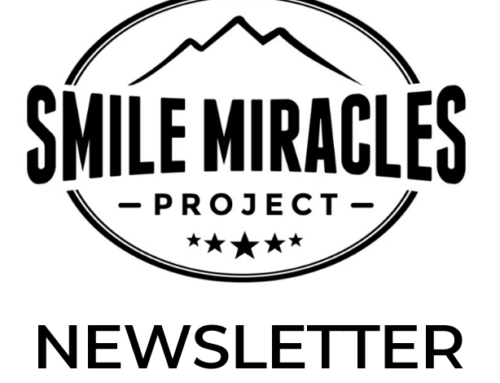Eighty-five percent of Americans have never heard of it, and yet even more (7 out of 8) have it to one degree or another. Ninety-nine percent of obese people have it. It affects about half of those over 60 but is most rapidly increasing among 20–30 year-olds. Millions are undiagnosed and completely unaware of their danger. Untreated it double or triples the risk of early death from heart attacks, strokes, and cancer. And if you happen to have it, your risk of severe or fatal COVID infection is 7 times greater than those who don’t.
What am I talking about? This alarmingly widespread disease is called Metabolic Syndrome and is so critical that is occupies a large portion of Drs Bale and Doneen’s recently published book – Healthy Heart, Healthy Brain. If you have less than ideal blood pressure, blood sugar, HDL (good) cholesterol, or waist size, you probably have it. Obstructive sleep apnea is also very closely associated with it, so much so that some have proposed it be added to that diagnostic list. Think you may be at risk? Here are some pointers to help get yourself back in the safe zone.
LARGE WAIST
A waist of 35 inches or more for women, or 40 or more for men will put you in the high risk category. There are some ethnical variations, but you can use that as a general guideline. And note, that’s actual measured waist size, not your pant size! Exercising for 30 minutes per day and eliminating refined carbohydrates such as sugar and white flour are a great way to start getting that under control. For more personalized information and coaching, I highly recommend the Complete Health Improvement Program (CHIP). Proven with over 30 years of scientific evidence, it is the best kept secret in weight loss and health restoration. You can learn more about that online at ChipOnline.NET.
HIGH BLOOD PRESSURE
Check it regularly, and if even one number is off (120/80 or above) talk to your doctor about tweaking your meds. Then start working on ways to naturally get it permanently under control. Practicing mindful meditation, forgiveness, and service can have tremendous benefits, as can eating more leafy greens, legumes, and whole grains. Getting 7-8 hours of sound sleep is also essential. And the CHIP program is great for this too.
LOW HDL CHOLESTEROL
High-density lipoprotein is the good cholesterol and being too low (under 50 mg/dL for women and 40 mg/dL for men) puts you on the fast track to diabetes and arterial disease. Even better, keep your total cholesterol to HDL ratio under 3 to 3.5. To get there don’t use any form of nicotine and eat foods high in omega-3 fatty acids – nuts and seeds as well as olive oil. For an extra boost combine them with purple foods like red cabbage and blackberries. (Yes oily fish can help too, but they also come with some risks you may want to avoid.)
HIGH TRIGLICERIDES
High triglycerides are another strong indicator that your metabolism is not functioning properly, setting you up for up to a 16 times greater risk of heart attack. Lose weight, eat more fiber, less sugar, and make sure you are getting enough vitamin D – most of us who live in the north or work inside need to supplement.
HIGH FASTING BLOOD SUGAR
Over 88 million Americans (over 1 in 4) have blood sugar levels high enough to put them in the prediabetic category, but 84% of them have no idea – they haven’t been tested! And if they don’t get a handle on it soon there is a high probability they are going to convert to full-blown type 2 diabetes. The lesson here, get checked! The good news is that with lifestyle changes like those taught in CHIP, high blood sugar is one of the easiest metabolic syndrome markers to correct.
OBSTRUCTIVE SLEEP APNEA
Although not on the official American Medical Association list of indicators of metabolic syndrome, OSA is considered highly relevant by those with a more wholistic viewpoint. Anyone with even slightly crowded teeth or a history of orthodontic treatment, sinus congestion, excessive weight, high blood pressure, or any of the other metabolic syndrome markers we’ve talked about, should definitely be tested. Snoring, tiredness, and large necks are additional risk factors that also need to be considered.
Once again positive lifestyle changes should be the primary treatment strategy for OSA &/or Sleep Disordered Breathing (SDB). In addition, airway enhancement and maximization can be tremendously beneficial in reversing the epigenetic anatomical airway constrictions now affecting 80% of the population. Continuous Positive Airway Pressure (CPAP) and Mandibular Advancement Devices (MAD) are currently the most common treatment protocols. However, both are inconvenient, require a lifelong commitment, and over time tend to decrease in effectiveness. Fortunately, a new short-term (12-24 months) non-invasive treatment called Biomimetic Oral Appliance Therapy (BOAT) is now available that naturally stimulates airway growth and opening, even in older adults, in ways previously only possible with extensive ENT and maxillo-facial plastic surgery. These epigenetic corrections are permanent resulting in 24/7 airway enlargement (rather than the nighttime only relief provided by the other options) and often eliminate any need for machines or appliances. The results, a hugely significant reduction in other markers for metabolic syndrome. In fact, it is highly probable that a complete resolution of metabolic syndrome will only be possible if obstructive sleep apnea and sleep disordered breathing are not properly addressed.
If you or someone you know (statistically that would be 7 out of every 8 of your friends and family) has any of the risk factors we’ve talked about, please give them a copy of this newsletter and have them call our office. This month we are offering a free complimentary Whole-Body Health + Wellness Assessment that will determine whether a person is at risk and what their treatment options may be. 9 years old or 90, it doesn’t matter. It is never too late to get started, but the earlier one does the easier the corrections will be. Wishing you a long and healthy life –





Leave A Comment
You must be logged in to post a comment.